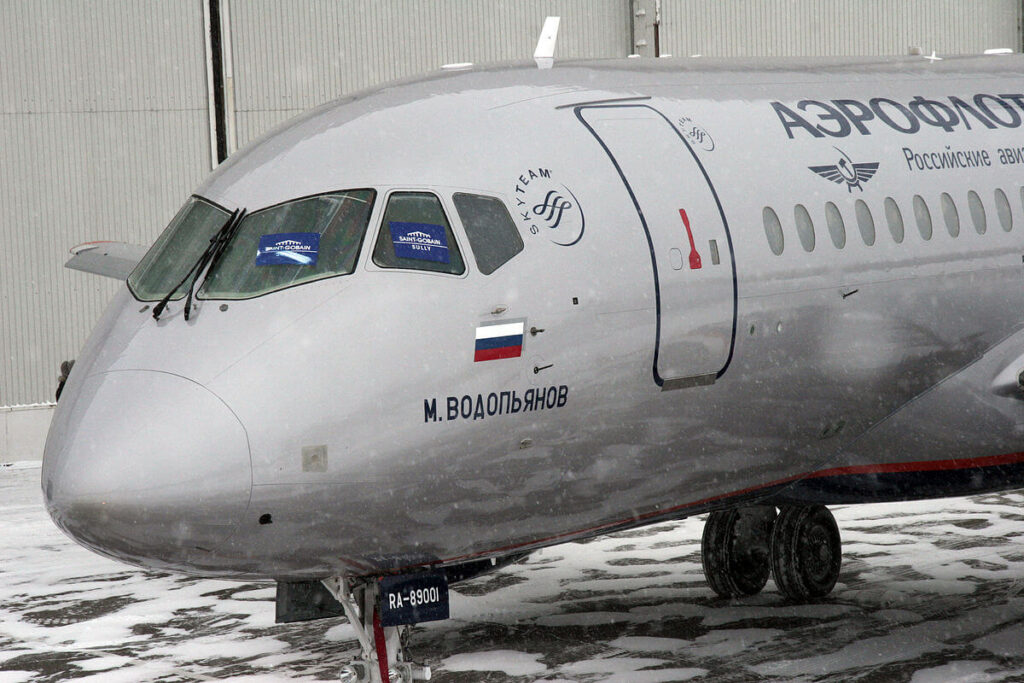Russian authorities have finished decoding flight recorders of Aeroflot Superjet 100, which left forty-one people dead and eleven injured after crash landing in Moscow Sheremetyevo International Airport (SVO) on May 5, 2019.
Russia’s Interstate Aviation Committee (IAC) confirmed having recovered both flight recorders from the accident scene on May 6, 2019. The Flight Data Recorder (FDR), however, was “subjected to intense temperature exposure and was seriously damaged,” the committee stated at the time, also noting that the cockpit voice recorder (CVR) was in “satisfactory condition”.
Shocking: Footage from inside the burning Aeroflot plane that landed in #Moscow. pic.twitter.com/t42JEG9ILC
— Ali Osman Özkök (@Ozkok_A) May 5, 2019
On May 17, 2019, IAC released a short update, noting that the accident investigators have “completed the interpretation of on-board parametric recorders (emergency and operational) data. An analysis of the information received”. IAC has also noted that a follow-up accident report was sent to the Federal Air Transport Agency (Rosaviatsiya).
On the same day, Rosaviatsiya sent a letter, called Flight Safety Information Nr.7, to civil aviation organizations, informing about IAC operational proposals, which are “recommended to be considered and accepted for implementation by the operators”.
Rosaviatsiya stresses that the letter “does not contain the conclusions and results” of the flight SU1492 accident investigation and that a “brief description of the circumstances of the event, included in Flight Safety Information Nr. 7, is not an assessment of the crew’s […] actions [by Rosaviatsiya]”.
Ничего себе он закозлил… Ад pic.twitter.com/WM2Ky9RrDH
— Руслан Левиев (@RuslanLeviev) May 5, 2019
The address of the non-final nature of conclusions comes in the light of Russian media reports. On May 17, 2019, RIA Novosti, the country’s state-operated news agency stated it had obtained a copy of the document sent by Rosaviatsiya. The document allegedly instructs aviation organizations to conduct additional training on emergency landings and actions in case of fire on board.
Another publication by the agency states that initial findings point to a pilot mistake. It references several examples of how SU1492 pilots allegedly failed to follow landing procedure during the accident: by entering into the glide path when the mass of the aircraft was about 42,600 kilograms -1,600 kilograms over the maximum permissible landing mass and not releasing brake flaps (interceptors) during the emergency landing.
In response, Aeroflot denied that the flight crew violated landing procedures. In a statement issued on May 17, 2019, the airline states that “flaps were in a position consistent with the landing procedure and in accordance with the existing system failure”.
Furthermore, “according to the procedure, the reverse is switched on first, and then on a steady run along the runway, spoilers are produced,” the statement read. “Therefore, in view of the absence of a stable path, the release of the interceptors was impossible. It is necessary to add that the requirements for airworthiness standards for aircraft certification are designed in such a way as to prevent the situation from deteriorating to catastrophic in any event”.
On May 5, 2019, Aeroflot Airlines flight SU1492 (registered RA-89098) took off from Moscow Sheremetyevo airport and was en route to Murmansk, northern Russia. There were 73 passengers and five crew members on board the Superjet 100 aircraft.
Some 30 minutes into the flight, the aircraft returned to Sheremetyevo after encountering problems, including loss of radio communication as the airliner was passing a thunderstorm.
Security footage of the airport reveals that the aircraft caught fire during the emergency landing. The plane bounced off the runway a first time before landing hard on its main landing gear. The gear collapsed and the engines met the runway, immediately catching fire.
After the accident, Sheremetyevo airport released a statement, claiming that “airport fire brigades and rescue teams arrived at the scene in 1 minute ‒ ahead of government regulatory requirements”. The standard arrival time referenced here is 3 minutes from Alarm call.
It also provided the following timeline of events (based on its own management systems and radio conversations data):
18:02 – Flight SU1492 of Aeroflot Airlines departed along the route “Moscow. Sheremetyevo – Murmansk”.
18:12 – The pilot reported to the ATM dispatcher that the crew made a decision to return to the airport of departure due to the radio communication failure.
18:13 – The pilot reiterated to the air traffic controller about the loss of radio communication and, in addition, about the loss of automatic control of the aircraft.
18:14 – The Flight Director informed the Chief of Sheremetyevo Airport Shift about the return of flight SU1492. The cause of it, according to the pilots’ report: the radio communication failure and the loss of the automatic control of the aircraft; the approach and landing of the aircraft in normal mode.
18:30 – Landing on the runway 24L. After landing the fire has appeared.
18:31 – “Alarm” was declared by the Flight Director of Sheremetyevo Airport.
18:31 – Evacuation slides are released, the evacuation of passengers from the aircraft is carried out by the crew.
18:32 – Arrival of the first fire brigade of the Sheremetyevo Airport Aircraft Rescue and Firefighting department (hereinafter referred to as ARFF), the start of fire fighting.
18:32 – Arrival of the second fire brigade of the ARFF, rescue, and evacuation of passengers and crew members by the ARFF teams.
18.33 – Arrival of an additional 4 brigades of the ARFF.
18:35 – Rescuers of the airport’s ARFF entered the burning aircraft.
18:48 – Fire is completely extinguished-Sheremetyevo airport information

